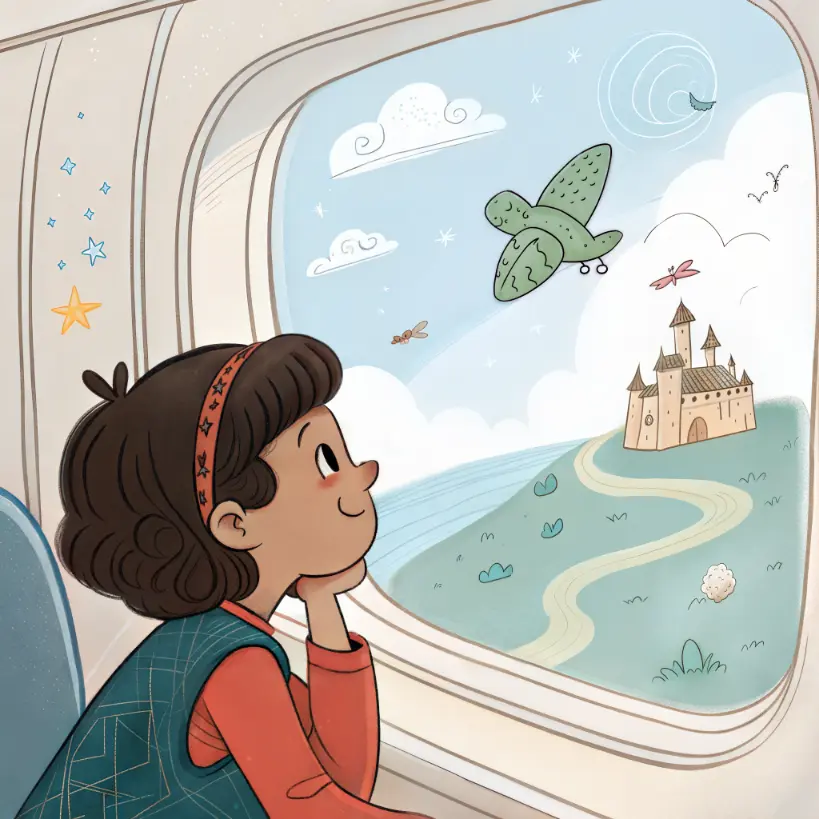Raise Creative Thinkers With Games That Spark Curiosity, Storytelling, and Laughter
Why Imagination Games Matter (Especially in Summer)
Summer adventures with kids are the perfect time to test out fun, flexible games—and the best ones don’t need any materials at all. These simple imagination games can become your go-to toolkit for long car rides, restaurant waits, or lazy afternoons on the beach. And the best part? You get to test them in real time with your kids to see which ones spark the most laughter, creativity, or curiosity. Think of it as your own little summer experiment—where every moment becomes a chance to connect, giggle, and grow together.
✨ Bonus: We’ve even included 3 creative games specially made for the WonderPad—perfect for screen-free fun on the go.
These kinds of games are more than just fun—they’re deeply aligned with Montessori principles. They invite independence, focus, and child-led exploration. Instead of telling kids what to do, these games give them the freedom to imagine, express, and make decisions. That freedom is what sparks deep learning, problem-solving, and joyful play.
1. Magic Object
Use your surroundings to fuel creativity. Point to any nearby object and ask, “What else could this be?” Kids get to reimagine the world around them and transform ordinary things into magical or silly inventions.
Example: A rolled-up napkin could be a telescope, a magic wand, or even a snake.
Other ideas: Try it with shadows on the wall, objects in your bag, or parts of the car.
2. What Happens Next?
Collaboratively create a story by taking turns adding one sentence at a time. This game builds storytelling skills and encourages listening and improvisation.
Example: “Once, a turtle found a key in the sand…” What does it open? Who does it belong to?
Other ideas: Set a theme (e.g., pirates, space, jungle), add a twist every few turns, or let someone be the narrator who guides the action.
3. Silly Statues
This laugh-inducing game gets kids moving and practicing self-control. One player strikes a funny pose, and the rest try not to laugh. The first to giggle is up next.
Example: Pose like a dancing flamingo wearing sunglasses. See who breaks first.
Other ideas: Add silly noises, play in slow motion, or set a timer to hold your pose.
4. 21 Questions
A great guessing game for winding down or passing time. One person thinks of something—anything! The others take turns asking yes/no questions to figure out what it is before hitting 21.
Example: “Is it alive? Is it bigger than a chair? Does it fly?”
Other ideas: Choose a category like animals, famous characters, or things you’d find on a beach. Try it backwards: give clues and let others guess!
5. In My Suitcase
This memory chain game encourages imagination and focus. Players take turns adding an item to an imaginary suitcase, repeating everything said before them.
Example: “In my suitcase, I packed a hat.” Next: “a hat and a pirate flag!”
Other ideas: Set a silly theme (like things you’d bring to a dragon party), go in alphabetical order, or challenge players to remember with rhymes.
6. What If…?
Pose ridiculous, thoughtful, or hilarious questions that start with “What if…” This open-ended game invites endless creativity and discussion.
Example: “What if giraffes could sing opera?” or “What if we all had wheels instead of feet?”
Other ideas: Turn it into a drawing challenge or use the questions as prompts for a short story.
7. Alien Translator
Pretend one of you is a confused alien who just landed on Earth. The others must explain simple objects or actions like brushing teeth or tying shoes. Bonus points for creative explanations!
Example: “What is this ‘toothbrush’ you speak of?” Let the kids explain.
Other ideas: Let the alien speak in made-up sounds, or flip the script and have the adult play the alien.
8. Mini Debates
Turn fun would-you-rather questions into mini debates. Each player picks a side and explains their reasoning. It builds logic, creativity, and confidence.
Example: “Would you rather have jellybean hair or spaghetti fingers?”
Other ideas: Create categories like food, animals, or superpowers. Let the group vote on the winner of each debate.
WonderPad-Friendly Travel Games
1. Pictionary
Use your WonderPad to play this classic drawing game. One player draws a word or idea silently while others try to guess what it is. It’s fast-paced and gets everyone involved.
Example: Draw a dragon, a pizza, or a helicopter.
Other ideas: Set categories (e.g., animals, actions, foods), use a timer, or make it team-based with points.
2. Finish the Drawing
Start by drawing a squiggle or random shape on the WonderPad. Pass it to someone else to turn into something fun or surprising. There are no rules except to be creative!
Example: A circle becomes a donut, or a squiggle turns into a rollercoaster.
Other ideas: Use a stencil to start with a recognizable shape, or draw with your eyes closed to challenge the next person.
3. Design a Creature
Let your child dream up their own magical creature on the WonderPad. Give it a name, describe what it eats, where it lives, and what makes it special.
Example: “This is a Flufficorn. It eats moonlight and hides in sandcastles.”
Other ideas: Combine two real animals (e.g., a lion and a turtle), or design a whole family of creatures with different roles or powers.
Ready to Play?
Start by picking a few of these games to try out on your next outing. Let your child lead the way—notice which games keep them engaged and which ones spark conversation. Keep a mental list of their favorites and come back to them regularly.
💡 Tip: You don’t need to memorize them—just pick a couple and try them out naturally. The more relaxed you are, the more fun everyone has.
👉 Want more tools to spark creativity and connection?
Join our newsletter for fresh ideas, printable games, and inspiration designed to help your family thrive, on the go and at home.



